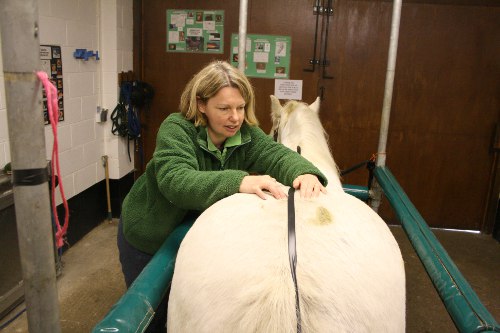Back problems in the horse are relatively common. Horses can get primary back problems, but secondary back problems caused by other diseases are much more common. For this reason it is very important that a very full and thorough examination of the whole horse is carried out to establish whether any soreness in the back is originating solely from the back or due to other underlying causes.
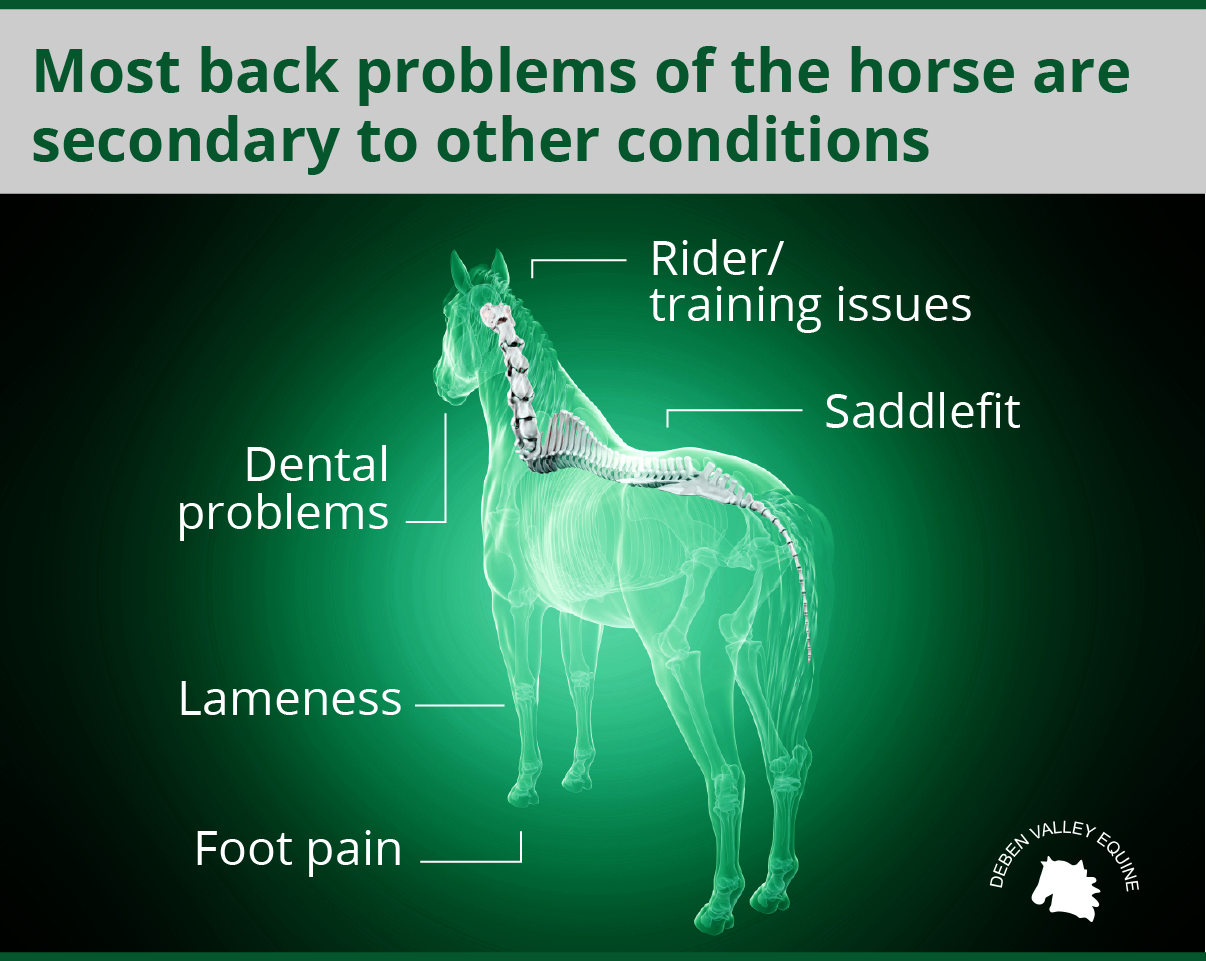
Common reasons for secondary back problems are:
- Foot pain
- Lameness
- Teeth problems
- Tack problems, in particular saddles
- Rider induced problems
- Gastric Ulcers
- And many more…
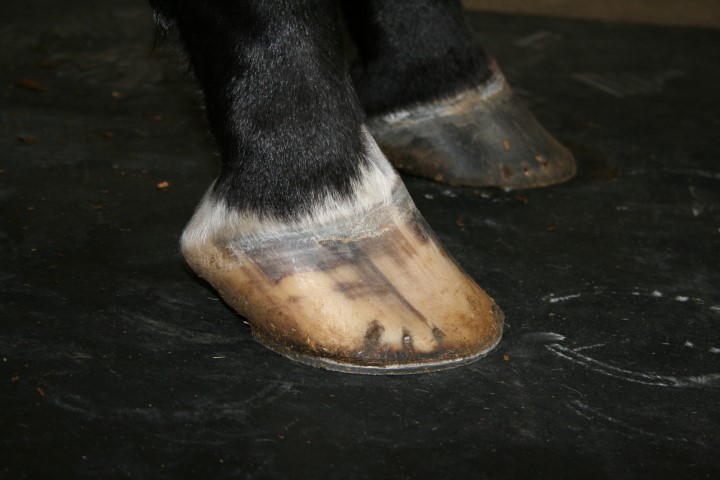
Long toe, low heel (poor) foot conformation
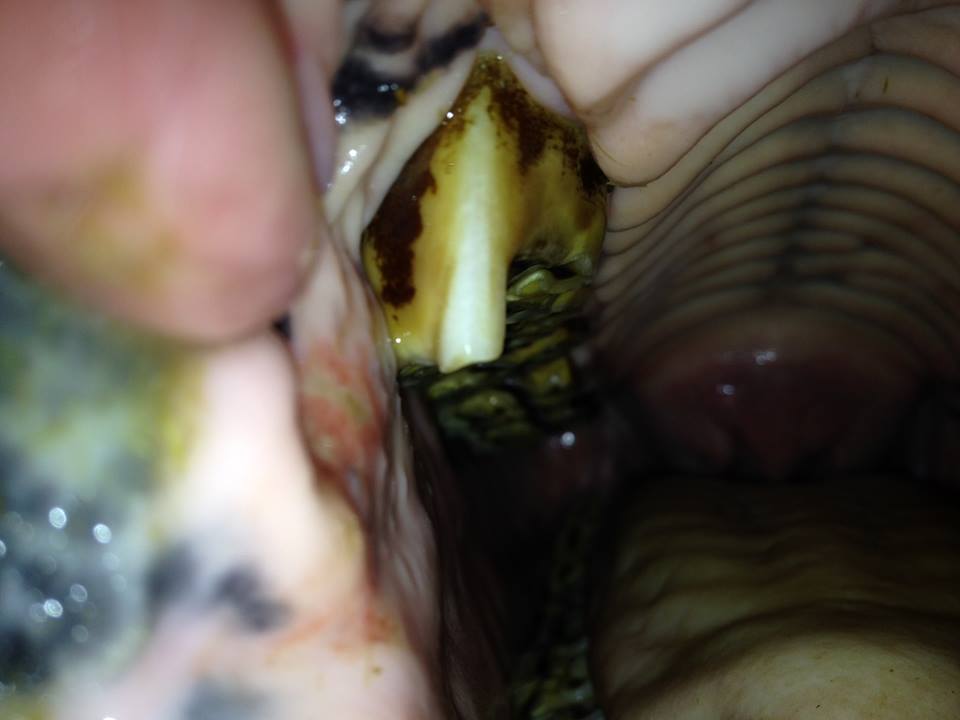
Dental overgrowth and ulceration of cheek
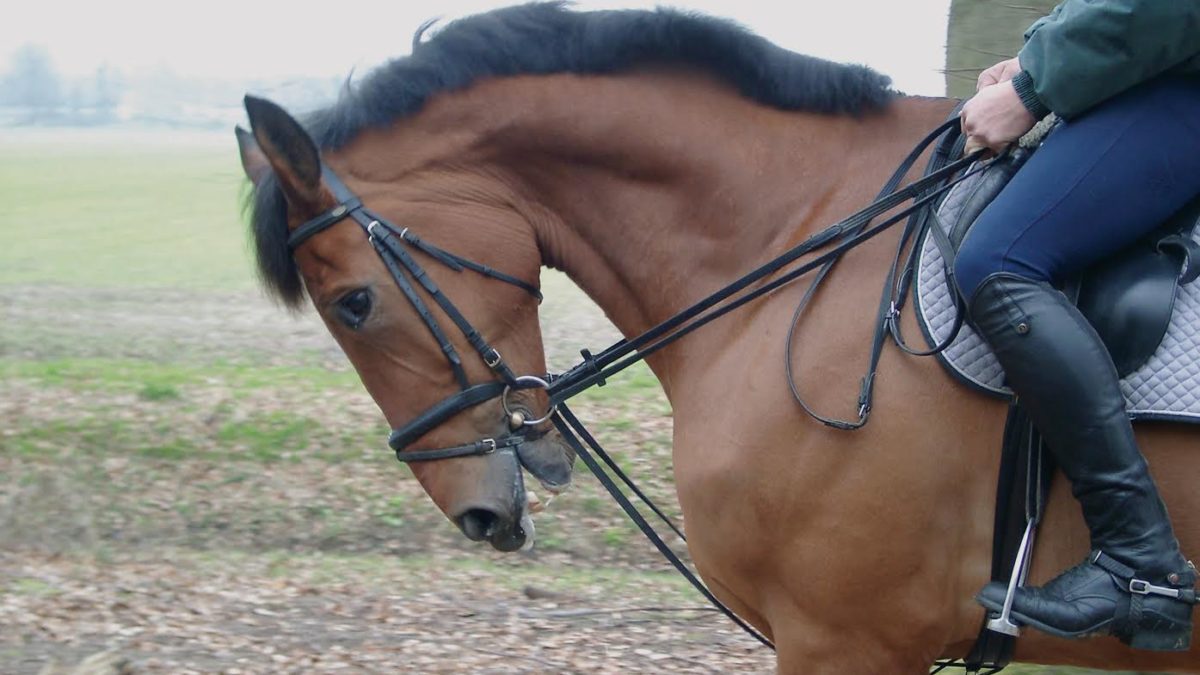
Rider and tack problems
Common reasons for primary back problems are:
- ‘Kissing spines’ (over riding dorsal spinous processes)
- Wobblers syndrome (narrowing of spinal canal in neck)
- Sacroiliac disease
- Arthritis of facet joints – any region, but neck and lumbar more common
- Spondylosis
- Pelvic fractures
- Lumbosacral disease
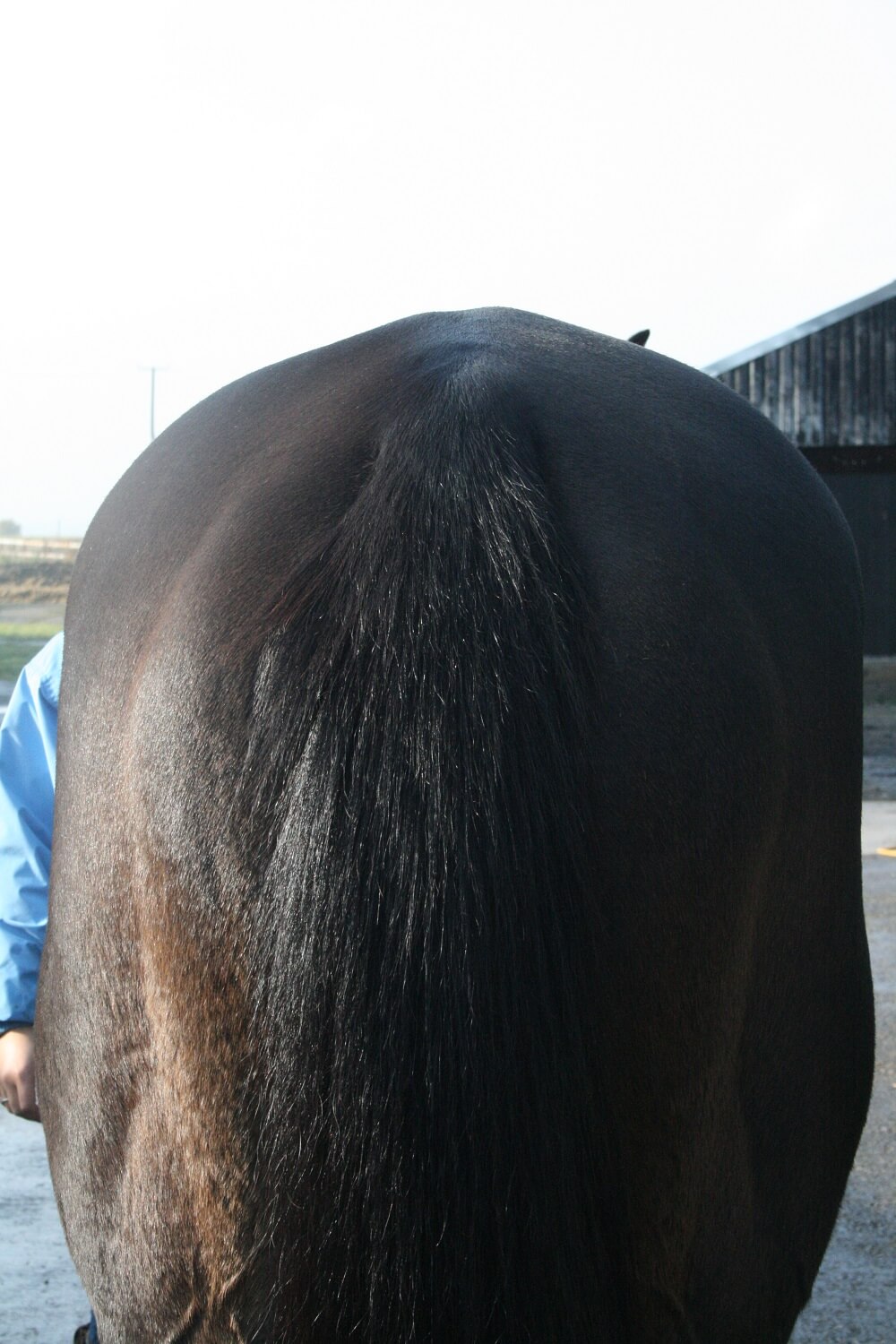
Sacroiliac disease is usually associated with asymmetry of the pelvis.
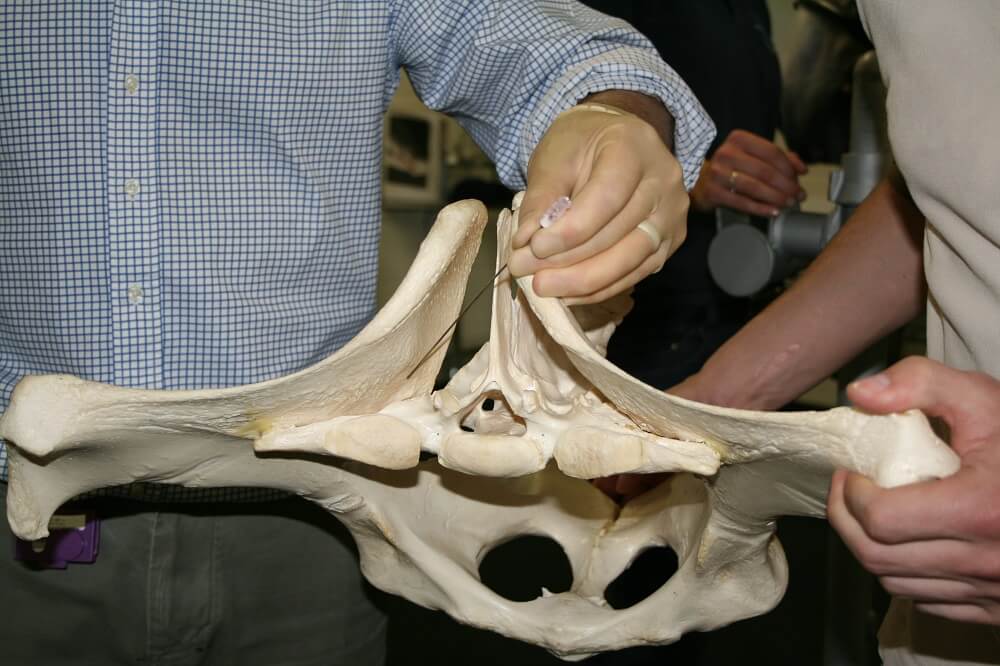
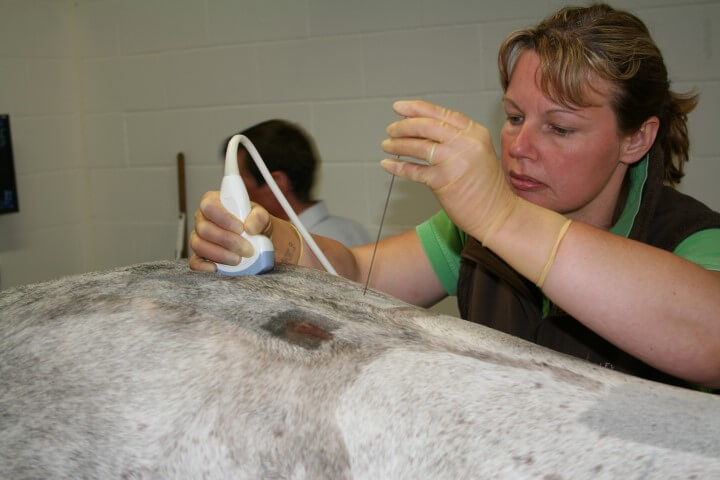
Medication for sacroiliac disease is administered under ultrasound guidance
Back Anatomy of Horses
The horses back is composed of a column of bony vertebrae that form a tube through which the spinal cord passes and conveys nervous messages to and from the body and brain.
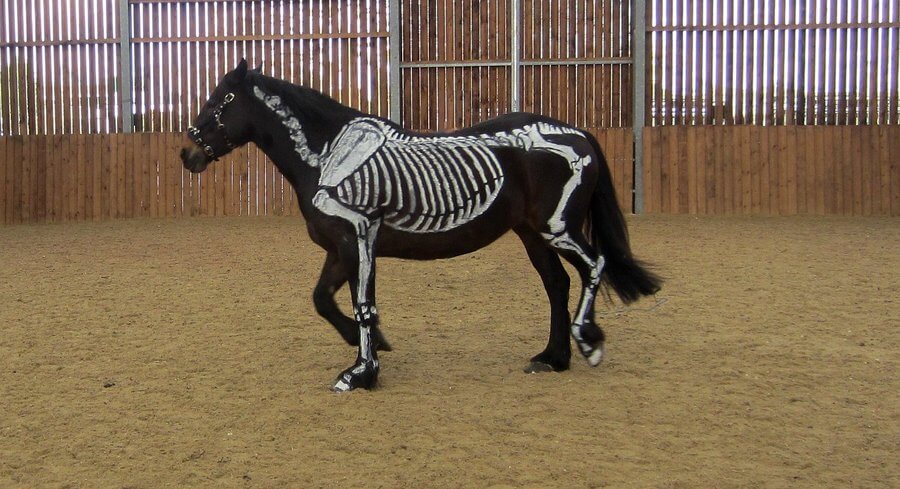
The horse has:
- 7 cervical (neck) vertebrae
- 18 thoracic vertebrae with ribs attached
- 6 lumbar vertebrae
- 5 fused sacral vertebrae (sacrum)
- 15-20 coccygeal vertebrae which form mainly the tail
The bones are held together by ligaments and muscles.
We place the saddle over the thoracic vertebrae – it should not extend into the lumbar region. The most common area of back pain seen in horses is the saddle area and in the lumbar muscle directly behind the saddle.
Investigating Back Problems
At Deben Valley Equine Veterinary Clinic we regularly investigate back problem / poor performance cases. The clinic has ideal facilities for a full investigation, but a preliminary examination can easily be performed at your stables.
Initially the horse is assessed at rest; conformation, asymmetry of muscles, foot balance and any areas of pain or muscle spasm are noted. The horse will be observed moving in hand, lunged on the hard and the soft, noting any lameness or gait abnormalities. Saddle fit will be checked and ideally we will assess the horse ridden. The back will be reassessed for pain or muscle spasm after exercise.
Further procedures such as the use of local anaesthetic (nerve blocks) to localise pain may be indicated. Digital radiography and ultrasound scanning can be used to assess the bony skeleton and soft tissue (muscle, ligaments and tendons).
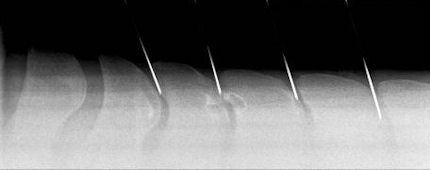
Kissing Spine radiograph
Depending on the diagnosis, a treatment plan will be formulated. This may involve local medication (directly into area of pain) or systemic drugs (in feed or intramuscular injections). This will be combined with a rehabilitation program to retrain your horse’s body to move without pain – we often use chartered physiotherapists to assist your horse and possibly you. We may enlist the help of your farrier or saddler too. Recently we have started offering acupuncture to assist pain control. Progress is monitored as your horse returns to work.
For much more information on this vast subject, please ask Helen Whitbread.
Preventing Back Problems
- Buy a horse suitable for purpose and sound (recommended following a 5 stage pre-purchase examination /full vetting)
- Be aware that your horse may change shape (fitness / body condition/ growth / maturity)
- Have saddle fitted and checked regularly (6 monthly)
- Regular dental checks by vet or EDT (6-12 monthly)
- Correct rider crookedness (instructor / physio)
- Seek professional help early on (vet / physio)
- Keep feet balanced and well shod at regular intervals (farrier)
Last updated July 2019
